Crafting Coffee Blends: 6 Steps on How We Make Coffee Blends
There is a science to mixing flavors. Adding vanilla ice cream on top of a warm chocolate brownie adds creaminess and cuts the rich flavor. Adding a dried apricot to your cheese and cracker, adds a level of sweetness that elevates the salty profile. The same can be applied to making a coffee blend. Here at Gento, we create and combine coffees that complement each other to achieve the flavor profile we want or our clients need. Here's how our team of coffee experts make the perfect coffee blend.
What Is a Blend?
Different from a single origin coffee, a "blend" includes a mixture of 2 or more single origin coffees that are contributing, in varying percentages, to the blend's flavor, body, aroma, etc. The goal is to obtain a balanced cup with characteristics that the individual coffees wouldn't have on their own. The effort to making the perfect blend with the flavor profile you want can be a delicate balancing act.
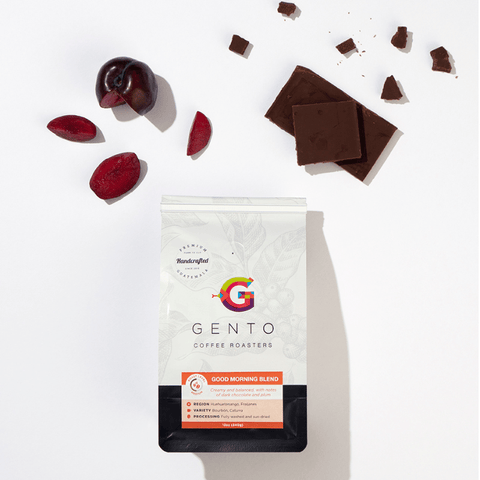
What Is Single Origin Coffee?
We refer to coffee that originates from a single farm, lot, or region as single-origin coffee. It is not mixed with other coffees and retains only its original characteristics.
How We Create a Blend
To start, we select a flavor profile as our objective. Do we want this coffee to taste like chocolate covered cherries? Do we want this blend to be full-bodied or balanced? We decide what we want to achieve with this blend of flavor notes and body.
Next, we pull the characteristics we want from the single origin coffee beans in our arsenal to utilize. Each bean has different characteristics, and different notes depending on how you roast it. The same coffee beans can present different notes depending on the roast level, such as fruity or acidic notes for a light roast, and dark chocolate and licorice for a darker roast. For blends, we try to find the perfect blend of light, medium, and dark roasts to fit the final taste we want.
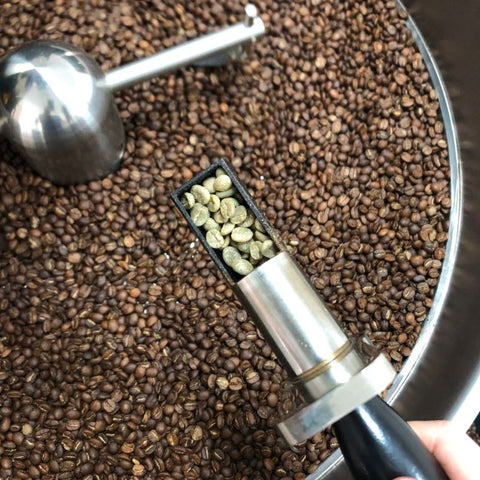
Each coffee or blend component is roasted separately since each coffee has different moisture and density, requiring a unique roasting profile.
After roasting each coffee, we then determine the percentage of each coffee to add to achieve harmony in the blend.
We carefully experiment with the roasts we incorporate until we achieve our desired blend. Sometimes we’ll choose a variety to add body, and one to add balance or acidity. For example: we can add a medium roast to obtain chocolate notes and balance, and add a light roast coffee for plum notes and acidity. We look for coffees that complement each other and can result in a cup of coffee with harmony and balance. With this, we'll create a delicious blend with fruit and chocolate notes, like our latest blend the Love Blend, with notes of chocolate covered cherries.
Trial and Error
We taste and test and adjust the percentages of each roast used until we reach the point of balance, a harmony of flavors.





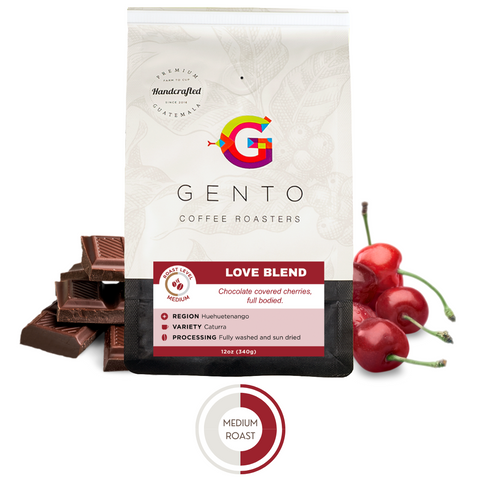

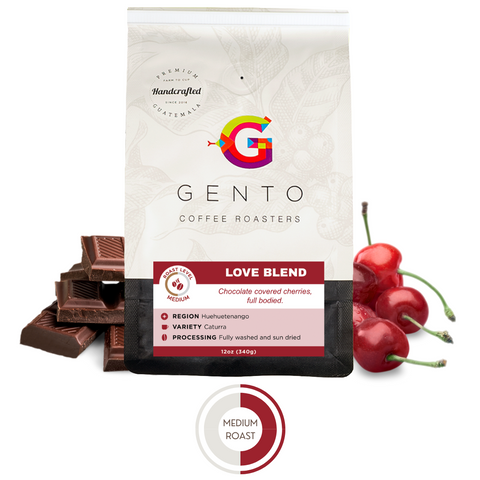
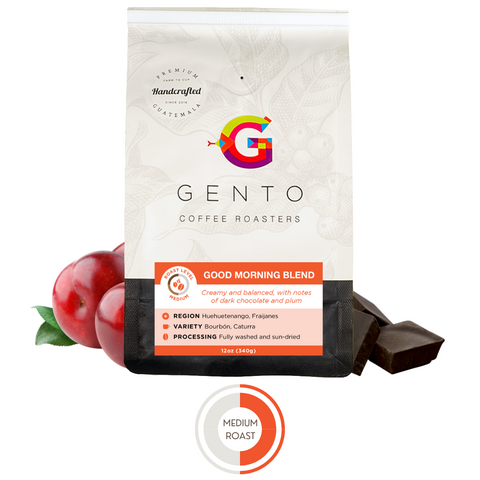

Leave a comment